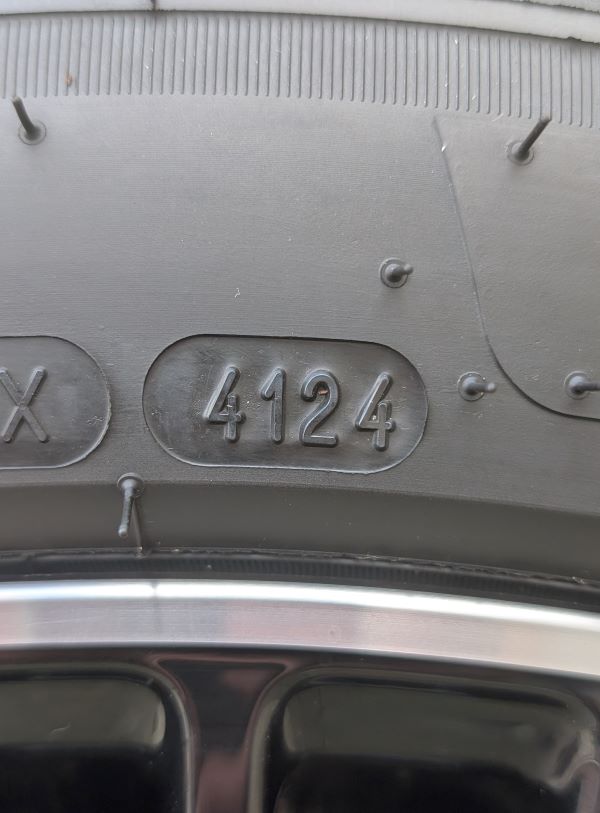27 March 2025
A new study by The AA as highlighted the percentage of vehicles driving on aged tyres and the need for regular inspections.
As vehicles continue to evolve with other advanced safety features, the results of the study are being used to help increase awareness amongst drivers that one critical component often overlooked is the age of the tyres. The study, carried out by the UK’s largest motoring organisation has highlighted the potentially significant impact of tyre age on road safety.
“Tyre blowouts are not only expensive and inconvenient but can also be incredibly dangerous for drivers and other road users. I would urge all drivers to pay closer attention to the age and condition of their tyres.”
AA research
The latest AA studies** include data taken from The AAs Vixa connected-car health app and Mobile Mechanics roadside repair teams. The combined studies use data taken from nearly 1000 vehicles that reveal alarming statistics about how many were reliant on tyres more than five years old.
The hidden dangers of aged tyres
Tyres, like any rubber product, degrade over time. This degradation can lead to cracks, fissures, and ultimately, tread separation, which can cause a loss of vehicle control. Even if a tyre appears to have sufficient tread, its age can compromise its structural integrity, where internal steel bands can become corroded and weakened due to water ingress over time. Experts recommend replacing tyres every five to six years from the manufacturing date, regardless of their appearance.
Dean Keeling, AA managing director of road services, said: “Year on year, tyre issues populate one of the top two slots for member callouts. Often, these could be avoided by carrying out some quick and easy routine checks on a vehicle’s tyres.
“Tyre blowouts are not only expensive and inconvenient but can also be incredibly dangerous for drivers and other road users. I would urge all drivers to pay closer attention to the age and condition of their tyres, regardless of tread depth by checking a simple four-digit code on the sidewall of their tyres, including the spare.”

Real-world implications
The AA is also urging drivers to check the age of ‘new’ tyres they are having fitted, after one AA member experienced a low speed blow out on an urban road within 15 months of buying four “new” tyres for his Mercedes Benz E Class. After the incident, he took the blown-out wheel to a different retailer who told him the failure was likely due to the age of the tyre. On inspection he found that one of the tyres was nine years old, and the other three were twelve years old, even though they had been sold to him as new.
There is no current UK law in place that prevents NOS (new old stock) tyres being sold as new.
The AA Member explained “I couldn’t believe it when they told me how old the tyres were, I’d not long had them fitted and they weren’t cheap or discounted in any way.
“When I confronted the garage who’d fitted them, they weren’t interested, and said there was no law against it.”
Our member is considering legal action against the tyre retailer if expert opinion supports his claim, and the retailer continues to refuse to provide replacements.
Greg Carter, AA Public Affairs Technical Specialist, said: “The AA believes there is a strong case for EU tyre labelling stickers to hold the date of manufacture in addition to existing fuel-efficiency, noise and wet-braking information, and this requirement is something we are campaigning for.”
Recommendations for drivers
To improve safety, drivers should:
- Check the date of manufacture: The date is usually found on the tyre's sidewall, represented by a four-digit code indicating the week and year of manufacture.
- Regular inspections: Have tyres inspected regularly by a professional to check for signs of aging, such as cracks or bulges.
- Replace old tyres: Regardless of tread depth, replace tyres that are over six years old.

Experience proactive car care from Vixa today.
*There are currently 34 million cars on Britain’s roads. If the findings of the AA study are extrapolated to these vehicles, it would mean more than 4 million could be relying on tyres that are more than ten years old, potentially compromising road safety. These findings underscore the need for increased education and awareness about tyre maintenance and safety.
Vehicle licensing statistics data tables - GOV.UK (www.gov.uk) table VEH0101
**Study collated data supplied by Vixa, from The AA.
Vixa from The AA | Proactive car care for cars | Car ownership made easier
***Study collated data supplied by AA Mobile Mechanics.
